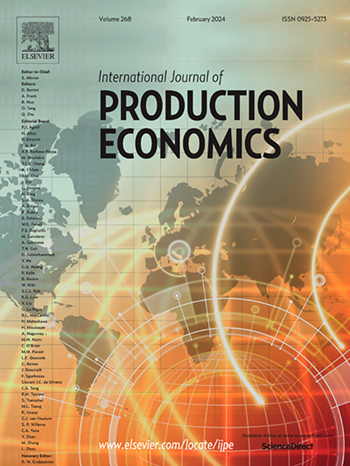双市场体系中制造商渠道选择与平台进入之间的战略互动
IF 9.8
1区 工程技术
Q1 ENGINEERING, INDUSTRIAL
引用次数: 0
摘要
全生命周期概念促使销售商在传统产品销售的基础上提供配套服务或产品,从而形成了由基础市场和附加市场组成的双市场体系。在本研究中,我们考虑一家制造商通过在线零售平台销售基础产品,然后直接向购买了基础产品的消费者销售附加产品。我们研究了制造商在基础市场的分销渠道战略与平台在附加市场的进入战略之间的互动关系。结果表明,在转售(代理)渠道下,平台进入附加产品市场能使制造商提高基础市场的批发价格(减少销售量以获得更高的利润)。我们将这种由平台进入造成的批发价格效应(销售控制效应)称为 "批发价格效应"。如果制造商在基础市场采用代理(转售)渠道,平台更愿意(不愿意)进入附加市场与制造商竞争;如果制造商采用双渠道,平台只有在佣金率和渠道竞争都很激烈的情况下才会进入。此外,当佣金率和渠道竞争都较低时,制造商更倾向于双渠道。有趣的是,由于两家公司之间的相互作用,当佣金率极高时,制造商反而会采用代理渠道。最后,我们研究了在哪些条件下平台有动力允许制造商在基础市场上从单一渠道转向双渠道。本文章由计算机程序翻译,如有差异,请以英文原文为准。
Strategic interactions between manufacturer channel choice and platform entry in a dual-market system
The full lifecycle concept has prompted sellers to provide ancillary services or products based on traditional product sales, leading to a dual-market system consisting of a base market and an add-on market. In this study, we consider a manufacturer selling base products through an online retail platform and then selling add-on products directly to consumers who have purchased base products. We investigate how the manufacturer’s distribution channel strategy in the base market interacts with the platform’s entry strategy in the add-on market. Results show that under the reselling (agency) channel, the platform’s entry of the add-on market enables the manufacturer to increase the wholesale price (reduce selling quantities to enjoy a higher margin) in the base market. We call this wholesale price effect (sales-control effect) caused by the platform’s entry. If the manufacturer adopts the agency (reselling) channel in the base market, the platform prefers (not) to enter the add-on market to compete with the manufacturer; if the manufacturer adopts the dual-channel, the platform enters only if both the commission rate and channel competition are high. Furthermore, the manufacturer prefers the dual-channel when both the commission rate and channel competition are low. Interestingly, due to the interactions between the two firms, the manufacturer will adopt the agency channel instead when the commission rate is extremely high. Finally, we examine conditions under which the platform has incentives to allow the manufacturer to change from a single-channel to a dual-channel in the base market.
求助全文
通过发布文献求助,成功后即可免费获取论文全文。
去求助
来源期刊
CiteScore
21.40
自引率
7.50%
发文量
266
审稿时长
52 days
期刊介绍:
The International Journal of Production Economics focuses on the interface between engineering and management. It covers all aspects of manufacturing and process industries, as well as production in general. The journal is interdisciplinary, considering activities throughout the product life cycle and material flow cycle. It aims to disseminate knowledge for improving industrial practice and strengthening the theoretical base for decision making. The journal serves as a forum for exchanging ideas and presenting new developments in theory and application, combining academic standards with practical value for industrial applications.

 求助内容:
求助内容: 应助结果提醒方式:
应助结果提醒方式:


